This strict but effective nutrition system allows you to significantly reduce volumes in an extremely short time. It gets rid of excess fluid, drying the body. Thanks to this, within a few days the waist and hips become much narrower. The diet, despite its apparent scarcity, supplies the body with necessary substances and maintains strength. The diet is considered popular among Hollywood actors. They resort to it when the role requires them to acquire graceful forms, and time for this is running out.
Lose 15 kg in 21 days. 15 days
Losing 15 kg in 15 days is no more difficult than losing 2 weeks.
The fifteen-day diet is very effective and convenient. After all, you can sit on it either less than the allotted time or more. It all depends on what result you get and whether you are satisfied with it. The principle of this nutrition system is to alternate fasting, protein and carbohydrate days. It is prohibited to adjust their sequence and content of the menu.
| Day | Nutritional nature | Meals | What do we eat |
| 1 | Unloading | All day | We drink kefir (1 l). |
| 2 | We drink milk (1 l) or tomato juice. | ||
| 3 and 4 | Protein | Having breakfast | A boiled egg with a slice of rye bread (30 g) and a cup of tea. |
| Let's have lunch | Mushroom broth (200 g) and boiled chicken breast (150 g). | ||
| Having an afternoon snack | Stewed vegetables (150 g). | ||
| Let's have dinner | Boiled egg with low-fat cheese (100 g) and a glass of kefir. | ||
| 5 and 6 | Carbohydrates | Having breakfast | A couple of apples or kiwi, tea with the addition of a teaspoon of natural honey. |
| Let's have lunch | Vegetable soup (150 g) and stewed vegetables (150 g). | ||
| Having an afternoon snack | A couple of cucumbers with one loaf of bread. | ||
| Let's have dinner | Salad of fresh cucumbers, tomatoes and green peas, dressed with olive oil (150 g) | ||
| 7 and 8 | Unloading | See days 1 and 2. | |
| 9 and 10 | Protein | See days 3 and 4. | |
| 11 and 12 | Carbohydrates | See days 5 and 6. | |
| 13 and 14 | Unloading | See days 1 and 2. | |
| 15 | Having breakfast | Stewed vegetables (150 g). | |
| Let's have lunch | Low-fat cottage cheese (150 g) and kefir (150 ml). | ||
| Having an afternoon snack | One loaf of bread and a cup of tea with the addition of a teaspoon of natural honey. | ||
| Let's have dinner | Boiled chicken breast (200 g) and tomato juice (100 ml). |
A week
There are a large number of recipes on how to lose 15 kg in a week.
But before you start testing these diets on yourself, you should remember one simple rule. The result of any nutritional system is strictly individual and directly depends on the characteristics of your body. It is necessary to take into account the so-called starting weight, the presence of chronic diseases, and the state of the endocrine system. For weight loss to be truly successful, strict adherence to the diet is required. Replacing foods or supplementing the diet with something is unacceptable. But you are allowed to drink green tea. True, its quantity should not exceed 3 cups. We definitely drink clean still water.
| Days | Meals | What do we eat |
| 1 and 2 | All day | A liter of low-fat kefir with tomato juice (250 ml) and a slice of whole grain bread (20 g). |
| 3 and 4 | Having breakfast | A cup of coffee with milk and natural honey (1 tsp). |
| Let's have lunch | Chicken broth (200 g) with green peas (2 tbsp.). | |
| Let's have dinner | Boiled chicken breast (150 g). | |
| 5 and 6 | Having breakfast | A couple of apples or oranges. |
| Let's have lunch | Vegetable soup (250 g). | |
| Having an afternoon snack | A couple of apples or oranges. | |
| Let's have dinner | Salad of cucumbers, tomatoes and green peas, sprinkled with lemon juice (200 g). | |
| 7 | All day | A liter of low-fat kefir. |
You will be able to lose 15 kg in 2 weeks on a liquid diet. Its main principle is, as the name itself suggests, the use of products of exclusively liquid consistency (you can drink vegetable and fruit juices, kefir, weak broth). As a bonus, get a clean colon.
Before starting this diet, you should definitely talk to a nutritionist. If you have any health problems, consult with specialized specialists (for example, an endocrinologist, gastroenterologist). In the absence of serious contraindications, a nutritionist will help you develop an optimal diet for you.
Preparation (3 days)
The drinking regime involves drinking at least 2 liters of clean still water every day. Unsweetened green tea is also allowed.
| Day | Meals | What do we eat |
| 1 | Having breakfast | Buckwheat porridge cooked in milk (200 g). Do not add sugar. |
| We have a second breakfast | A glass of kefir. | |
| Let's have lunch | Vegetable soup (200 g), boiled chicken breast (70 g). | |
| Having an afternoon snack | One apple. | |
| Let's have dinner | Stewed vegetables (200 g). | |
| 2 | Having breakfast | Oatmeal cooked in milk (200 g). Do not add sugar. |
| We have a second breakfast | A glass of milk. | |
| Let's have lunch | Baked chicken breast (150 g) and a couple of cucumbers. | |
| Having an afternoon snack | Walnuts (50 g) and one apple. | |
| Let's have dinner | Low-fat cottage cheese (200 g). | |
| 3 | Having breakfast | Liquid mashed potatoes (200 g). Do not add salt, butter or milk. |
| We have a second breakfast | A glass of kefir. | |
| Let's have lunch | Grated carrots (200 g) with a couple of teaspoons of natural honey. | |
| Having an afternoon snack | A glass of kefir. | |
| Let's have dinner | Liquid mashed potatoes (150 g). Do not add salt, butter or milk. A glass of kefir. |
DETAILS: Vikalin - instructions for use
For 2 weeks, you should eat every day according to the schedule below. It is prohibited to violate it or make any adjustments to it.
| Time | What do we drink |
| 8:00 | A glass of oatmeal broth. To prepare it, you need to boil oatmeal (100 g) in water (0.5 l), then strain. |
| 9:00 19:00 | Vegetable broth (250 g). |
| 10:00 13:00 | A glass of boiled hot water. If desired, you can add a few drops of lemon juice. |
| 11:00 | A glass of juice from any fruit. |
| 12:00 | A glass of low-fat kefir. |
| 14:00 | A glass of berry decoction. If there are no berries, you can replace them with dried fruits. |
| 15:00 | Weak chicken broth (200 g). |
| 16:00 17:00 20:00 | A glass of boiled hot water. |
| 18:00 | A glass of juice from any vegetable or fruit. Dilute with water in a ratio of 3/4 juice - 1/4 water. |
| 21:00 | A glass of slightly warmed milk. |
You need to exit a liquid diet correctly. This stage cannot be neglected, even if you intend to finish it earlier than you originally expected.
| Day | Meals | What do we eat |
| 1 | Having breakfast | Liquid mashed potatoes cooked in water (200 g). |
| We have a second breakfast | A cup of mint tea with lemon. | |
| Let's have lunch | Grated carrots (200 g) with the addition of a couple of teaspoons of natural honey. | |
| Having an afternoon snack | A glass of kefir. | |
| Let's have dinner | Low-fat cottage cheese (200 g). | |
| Before bedtime | Drink a glass of kefir | |
| 2 | Having breakfast | Any baked vegetables (250 g). |
| We have a second breakfast | A glass of kefir. | |
| Let's have lunch | Buckwheat porridge cooked in water, without adding oil (200 g) with fresh herbs. | |
| Having an afternoon snack | Walnuts (50 g). | |
| Let's have dinner | Boiled unsalted rice without oil (200 g). | |
| Before bedtime | We drink a glass of kefir. | |
| 3 | Having breakfast | Oatmeal cooked with milk (200 g). You can add a teaspoon of natural honey. |
| We have a second breakfast | A glass of milk. | |
| Let's have lunch | Vegetable soup (250 g) and baked beef (70 g). | |
| Having an afternoon snack | A glass of kefir with one loaf of bread. | |
| Let's have dinner | Low-fat cottage cheese (150 g) with one apple. | |
| Before bedtime | We drink a glass of kefir. |
How many kilograms can you lose in 21 days? Weight loss plan, scheduled by day
Perhaps you are skeptical and don’t believe that you can lose weight in 3 weeks. Then you're wrong. This goal is quite achievable, you just need to act methodically, day by day, adding (and eliminating) certain foods and drinks to your diet, as well as acquiring healthy habits and giving up bad habits. Get started - and in three weeks you will see the result!
First day
Write what you want to achieve in your notebook or on a piece of paper and put it in a visible place. Start with simple exercises, such as walking.
Second day

Avoid drinks with “harmful” calories – coffee with sugar, Coca-Cola, alcoholic beverages. Replace them with water, green tea and natural juices.
The third day
Take up exercise or walking again. You can increase the distance by a few hundred meters or add some exercise.
Fourth day

Switch from the usual three meals a day to six meals a day. At the same time, of course, you can eat much less at one meal than before. At the same time, the menu should always include fruits, vegetables, fiber and protein products.
Fifth day
Make a list of healthy products that you need to buy and go to the market with it (and don’t buy anything that’s not on the list). If you couldn’t resist and bought some unhealthy products, it’s better to get rid of them somehow (donate, sell, or even throw away).
Sixth day
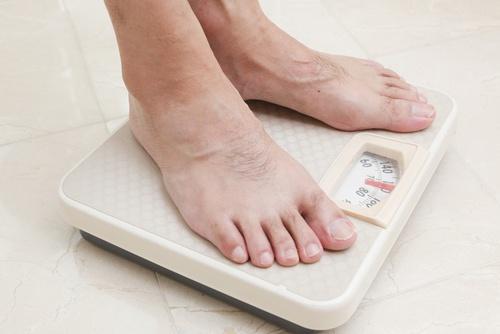
Do the weighing and write down the weight in your notebook. Choose some type of physical activity that you will do at least three times a week.
Seventh day
Plan your diet for the next week and, if necessary, go grocery shopping again to the market or natural food store.
Eighth day
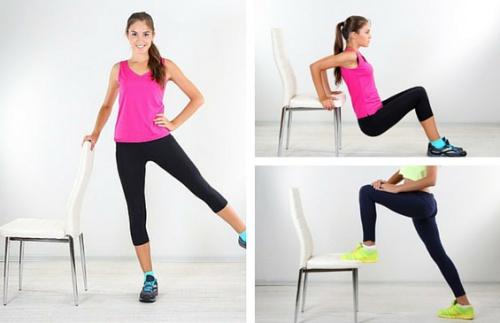
Continue with your exercise plan. You can consult a physical trainer or train on your own. To prevent classes from becoming boring, it is good to change exercises.
Ninth day
Include a fruit or vegetable in your diet that you haven't eaten in a long time (or ever). Try to eat raw or steamed fruits and vegetables.
Tenth day
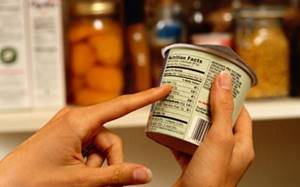
Eliminate foods containing trans fats from your diet and do not forget to exercise.
Eleventh day
Drink enough water (2 liters in winter and 3 liters in summer and on days when you exercise).
Twelfth day
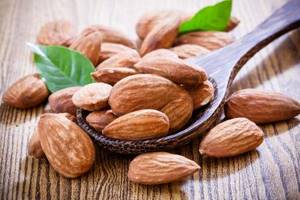
Pay attention to the amount of fiber you consume per day. This amount must be at least thirty-five grams. If your diet is low in fiber, add a handful of almonds (not only are they a source of fiber, but they also help control your appetite).
Thirteenth day
Using the appropriate tables, calculate the number of calories you consumed in previous days. Check the minimum and maximum quantity that is allowed for your age, weight and build. Also specify how many kilograms you want to lose.
Fourteenth day

Plan your diet for the next week. Estimate how many products you need to buy (including those you have at home). Eat more fruits and berries (for example, blueberries and raspberries).
Fifteenth day
Change the exercises you did before that day or make them more difficult. You can increase the weight of the dumbbells and walk a longer distance. You can also add a new series of exercises.
Sixteenth day
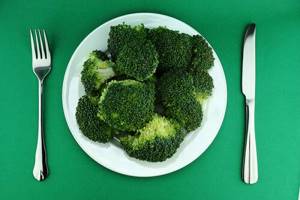
Learn new, healthier ways of cooking. For example, steamed or grilled. Try to eat more raw and low-fat foods.
Seventeenth day
Eat less for dinner than in previous days, and look for a new (compared to what you were before) source of protein. For example, if you previously ate chicken and tuna, switch to veal and salmon.
Eighteenth day

Train a little more than last time. Increase the load, training time, distance (when walking, running or swimming), add new exercises.
Nineteenth day
Check how much closer you are to the goal you set before starting your three-week weight loss plan. You can weigh yourself or try putting on clothes that have been too small for you lately.
Twentieth day

Start shopping for groceries for the next few days (probably, now that you have lost a few kilograms and felt an increase in energy and vitality, you will no longer want to return to your previous eating habits).
Twenty first day
Analyze the changes that have occurred in your life. Strengthen your resolve to get rid of those extra pounds. And keep up the good work. You've already acquired healthy habits!
How to lose weight in your stomach?
In order to lose 15 kg within a month, you need to combine diet and exercise. The exercise you should do to lose belly fat is squats. But first you need to prepare the body for such loads, so you should do simple exercises in the morning before this, and after 3 weeks you can already do squats (15 squats in 3 sets). It is important to do squats two hours before meals. You can also use a hoop, just choose a heavier one. There may be some bruising, but it will go away quickly.

The diet should include the following products:
- Vegetables and fruits
- Various boiled meats
- Low-fat dairy products
- Buckwheat and rice
- Lean fish
But all these foods should not be eaten in large quantities at night.
21 day program. Does a habit form in 21 days?
| Do you know where this figure of 21 days came from? A rather interesting experiment was conducted by the US National Aeronautics and Space Administration. A group of 20 people was created. Everyone was given glasses with lenses that turned the image upside down and they had to wear them for 30 days, i.e. 24 hours a day. After 20 - 25 days, their brain was so accustomed to seeing it in the projection that the “miracle” of the lens gave it that it perceived the imaginary reality as reality, i.e. the brain itself turned the image upside down. The peak of image reversals occurred on the 21st day. This group of 20 people was divided into two. 10 people continued to wear glasses, the second group was asked to take off their glasses for one day. It also took them the same 20 - 25 days to get used to the real reality back! Hence the popular belief that a habit can be created in 21 days! But there is one inaccuracy: the astronauts wore glasses 24 hours a day, i.e. constantly. If you do the math, minus sleep, it took more than 300 hours to develop this habit. Therefore, according to many experts, it actually takes more than three months to develop a habit. The following stages of habit development have been observed: 0. Made a decision. An important stage, but without reinforcement by action, you are still at the zero stage of developing a habit. 1. Did it at least once. (getting moving is the most important thing) 2. I did it two days in a row. (getting up at any time one day is not difficult, but two days in a row requires effort. After taking a shower, you can tell yourself that from that moment you began to develop a habit, but whether this is really so, the next day will show) 3. Did it on within a week. (overcome the social factor - do something all week, INCLUDING weekends) 4. 21 days. (time after which the new habit will take hold in the mind and become fully conscious) 5. 40 days. (the time after which the habit will be firmly established until you develop the opposite) 6. 90 days. (time of 100% acquisition of habit) BUT! Once you get off course and return to old habits, it takes just as much time to re-instill them. For example, if you decided to run in the morning, you ran for 21 days, it became a habit and you ran like that for a couple of weeks, and then you stopped doing it, after 21 days the habit was no longer there. Regularity is a very important criterion. If there were gaps, then the above hierarchy of stages is useless - it only works for activities that were not interrupted. For example, I got up at 5 am for 4 days in a row, but didn’t get up on the 5th. What stage are you at? At the zero stage of developing the habit of getting up at 5 am and at the first stage of getting rid of this habit. SO: ✿ If you decide to develop a habit, then consciously track your actions for three months. Only after this period has expired can you more or less relax ✿ If you take a break for a while, you can safely add it to the period for cultivating the habit. ✿ Once you decide to develop a habit, make every effort to follow it without exception. No matter how you feel, no matter the circumstances, once you have made a decision - act, stand your ground to the end! |











